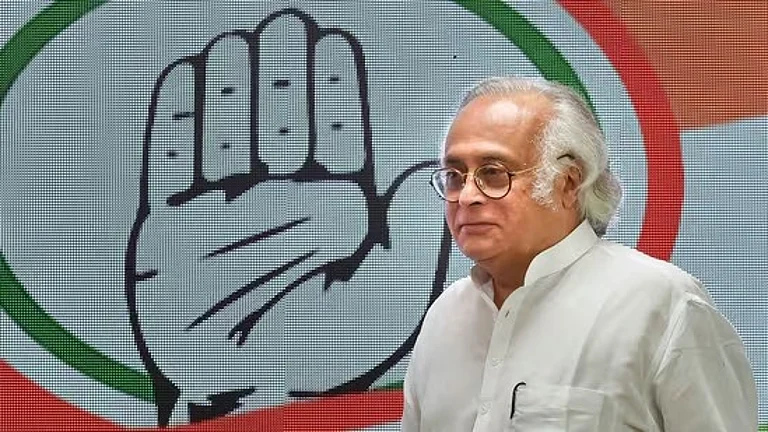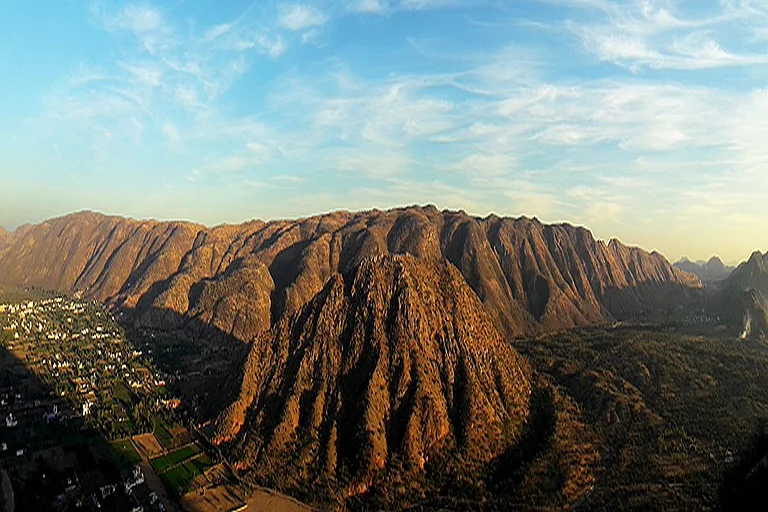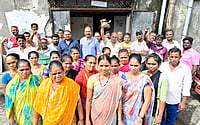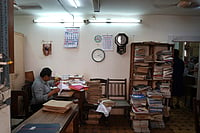Ramesh Moti Parmar, 56, walks as though gravity has turned against him. His shoulders slump under invisible weights, knees bend unnaturally, and the slap of his worn slippers echoes like tired drums across Dharavi's pavements. The buildings around Evershine rise like giants, indifferent to his presence. He disappears into their shadow, swallowed whole.
He pauses where two 'kabadi' shops flank a narrow, dark slit in the concrete. At first glance, it looks like a discarded trash alley. But beyond that crevice lies one of Dharavi's unseen arteries, a passage feeding over 1,500 households, none of which exist on the city's redevelopment blueprint.
Walk through, and the city morphs. Lanes shrink. Tin sheets form ceilings. Plastic bags hang from doorways like insulation. The walls, red with exposed brick, glisten with sweat. Wires coil above like tangled veins. Homes are the size of parking spaces. The ground remains cloaked in perpetual shadow, moisture rising from every crevice. This is Kamla Nagar, a settlement stitched together from survival and scraps.
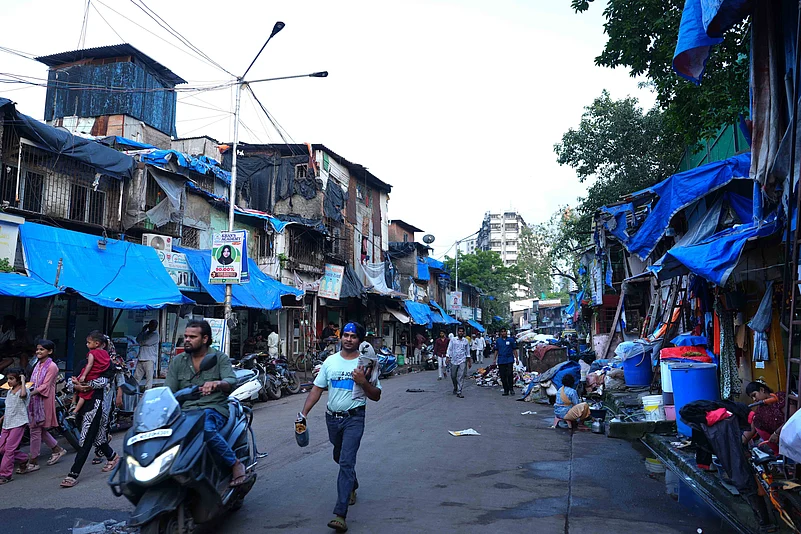
Ramesh calls this home. He scratches at his tooth, trying to dislodge remnants of 'Gutka'. He has just returned from "the smell" — not a place, but a condition. A toxic cocktail of rotting sewage, human waste, and ammonia that clings to the air, his skin, his breath. He is not a BMC employee. No uniform. No gloves. No ID. Ramesh is one of Mumbai's countless invisible sanitation workers, an informal scavenger who dives into manholes with nothing but a rod, a prayer, and the will to return alive.
At home, no one sits beside him. His son Arjun, 27, works in a cramped printing press, earning eleven thousand rupees a month. "He’s mentally sick," Arjun says quietly. "My mother left him years ago. It wasn’t just the work."
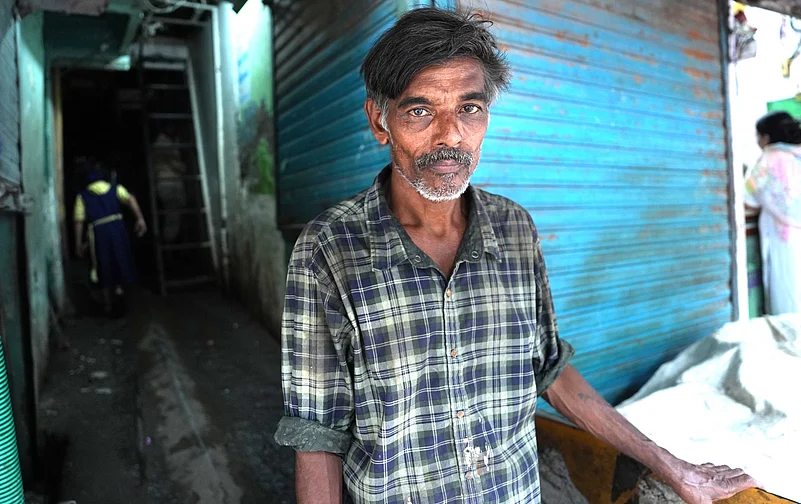
The story has circulated for years, as much a memory as a myth. When Ramesh was a child, he was abducted from the footpath in Kamathipura. The family lived near Mahalaxmi Racecourse, their home a piece of plastic spread over concrete. One day, he wandered near a horse cart. Strangers took him. He was electrocuted.
"They did it to make him beg," Arjun explains. "The scars made people pity him."
The electricity didn’t just scar Ramesh's body. It warped something inside. His skin melted. His thoughts fractured. He returned physically, but mentally he remained in that dark place. It sounds like fiction. Something borrowed from a grim screenplay. But it isn’t. Similar stories shocked global audiences in Slumdog Millionaire. Maimed children begging on traffic islands. In fiction, it is dramatic. In Dharavi, it is routine.
Only last month, police arrested a woman in Navi Mumbai for kidnapping children and forcing them to beg. In her flat, children were found drugged and bleeding, news that barely made the second page of The Times of India. No one rescued Ramesh then. A local man found him begging near Byculla and brought him back to the footpath where they had once lived. In Ramesh's hazy memory, there's a dark patch he still recalls — something like the Kamlagarh Nagar of today. A place where sunlight doesn't reach and the walls constantly sweat with dampness.
Today, Ramesh climbs a rickety staircase nailed together with planks, rusted bolts, and luck. It leads to a one-room home , kitchen, bathroom, and cupboard stacked like a puzzle. Old wedding photos hang by a nail. His wife’s face is in one.
"She left when I was five," Arjun says. "It wasn’t the job. It was everything else."
Now, the household includes Arjun’s wife Surekha and their two children. They survive on Arjun’s wages, stretched thin over groceries, school fees, and even toilet fees.
Yes, toilet fees.
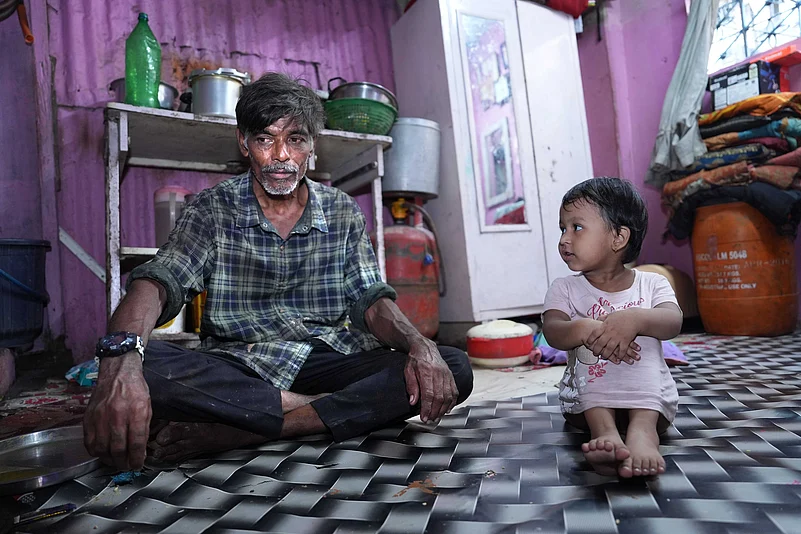
The only community toilet nearby charges ₹3 per use. It shuts at midnight and reopens at 4 a.m. Surekha, who sells vegetables in Dadar, plans her life around those hours. She leaves before dawn and returns late. The children remain unsupervised.
Sonal, a 13-year-old from the neighboring house, studies at Shree Gujarati Samaj Vidyalaya in Kurla. Each morning, she sweeps the street outside their home, washes utensils, climbs the same broken ladder her mother once fell from, and readies herself for school.
"I don’t want to miss class," she says, brushing the dust off her skirt.
Surekha smiles and pinches her arm. "Didn’t I help too?"
Everyone worries for Surekha. Five months pregnant, she miscarried last year after slipping on the jagged stairs. Every weekend, they reinforce the house. Patch a hole. Add a tin sheet. Replace a rotting plank. It’s a ritual of desperation. Arjun avoids talking about his marriage. "We were 16, maybe 17." He provides what he can, swallows what he cannot. When his mentally unstable younger brother cries at night, Arjun just lowers his eyes.
"In our caste," he whispers, "we shouldn’t be doing this work. My father cleans the same gutter we use. For what? ₹200?" They belong to
Despite being banned in 1993 and again in 2013, manual scavenging persists. It feeds on caste, poverty, and societal neglect. In India, 95 percent of manual scavengers are Dalits. Among them, most are women. The Valmiki (or Balmiki) caste remains most brutalized by this legacy. To address this, Mission Garima was launched in 2014 as a collaboration between the Municipal Corporation of Greater Mumbai (MCGM) and Tata Trusts, inspired by photojournalist Padma Shri Sudharak Olwe's haunting documentation of over 38,000 conservancy workers in Mumbai.
The Tata Institute of Social Sciences (TISS) followed this with a comprehensive Baseline Survey in 2015, covering 39,729 workers across departments such as Solid Waste Management, Storm Water Drains, and Sewerage Operations. Findings revealed alarming issues around safety, alcoholism, indebtedness, and housing. Over 80% were male, and many worked without proper tools or identification.
Ancient religious texts like the Naradiya Samhita described scavenging as the duty of slaves. A theology of degradation has quietly shaped centuries of practice.
Yadur, 18 (name changed), ties a rope around his waist before sunrise. He wraps a plastic sheet over his torso like armor. He grips a metal rod in one hand. Cheap liquor swirls in his stomach.
"The smell doesn’t bother me now," he says, his eyes eternally bloodshot. "One of my friends got sick last week. Can’t even stand. But we need the money."
His family doesn’t know what he does.
"In Dharavi, everyone is from a lower caste. Doesn’t matter what god you worship."
Violence here wears different clothes. Sometimes, it looks like a rope lowered into a manhole. No guarantee it will be pulled back. In 2004, photojournalist Sudharak Olwe descended into a sewer in Vikhroli with a manual scavenger. He never went again.
"You're completely cut off," he said. "That rope was the only hope. And even hope felt too far away." His photos stunned the world: men submerged waist-deep in black sludge. No gloves. No boots. Only courage and compulsion.
In the Marathi film Court (2015), a scavenger dies inside a manhole. Officials call it suicide. The audience knows better.
"Pehle dekh lo andar saans lene layak hawa hai ya nahi," says a line. First check if there is air in there.
Kamla Nagar remains invisible to the Dharavi Redevelopment Plan. These 1,500 homes aren’t on any official map. Surveyed recently under DRP, when the city redraws its future, this place is left outside the margins. And yet, it is people like Ramesh who clean its waste, carry its bricks, stitch its leather, drag its garbage. The city’s gleaming skyline rises on their broken backs.
"People say Dharavi is improving," Surekha says. "Not here. Here, it’s always night."
The Brihanmumbai Municipal Corporation (BMC) is responsible for Mumbai's sanitation. But who is responsible for those who clean the underbelly of this city?
In this pocket of Dharavi, where children leap over sewage and mothers climb stairs that threaten to collapse, the BMC rarely appears. Informal workers like Ramesh do. Dharavi, once branded a slum, now gleams on real estate flyers. But inside its labyrinth, where the city keeps its secrets and its sewage, no one counts these lives.
When redevelopment comes, it will come in bulldozers and blueprints. But where will the Rameshes go?









